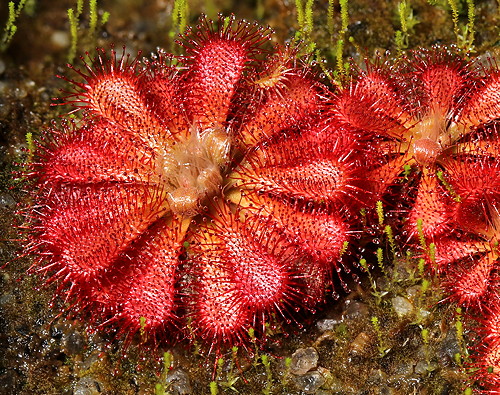Directions
Find the Stanley Rehder Carnivorous Plant Garden at 3800 Canterbury Rd, Wilmington, NC 28403.
Stanley Rehder, known as the "Flytrap Man," dedicated his life to the conservation and protection of carnivorous plants. His passion for these unique plants, especially the Venus Flytrap, led to the creation of the Stanley Rehder Carnivorous Plant Garden in Wilmington, NC. The garden, named in his honor in 2012, is part of the Piney Ridge Nature Preserve and showcases a variety of carnivorous plants native to the area. Rehder's efforts in conservation have left a lasting legacy, attracting visitors from around the world to learn about and appreciate these fascinating plants.
Find the Stanley Rehder Carnivorous Plant Garden at 3800 Canterbury Rd, Wilmington, NC 28403.

This plant is a small wildflower commonly found in wet places like bogs and pine flatwoods. It has bright orange flowers that bloom from March to November. The plant's seeds are dispersed by ants due to the fleshy elaiosomes attached to them. Learn More

This carnivorous plant has tall, yellow-green pitchers that attract and trap insects. It is native to the southeastern United States and prefers sunny, wet habitats like bogs and marshes. Learn More

Also called, “Crimson Pitcher Plant”, known for its striking white and red pitchers, this carnivorous plant is also native to the southeastern United States. It typically grows in boggy areas and relies on insects for nutrients. Learn More

This plant features low-lying, purple-red pitchers and is found in acidic bogs and wetlands. It is widespread in North America and is one of the hardiest pitcher plants. Learn More

Famous for its rapid closing trap mechanism, this carnivorous plant is native to the coastal plains of North and South Carolina. It has over 130 cultivars registered with the International Carnivorous Plant Society. Learn More

This terrestrial orchid, also known as "Grass Pink," is found in bogs, wet meadows, and prairies. It is characterized by its striking pink to lavender flowers with a distinctive lip that mimics the appearance of an insect. Native to North America, it blooms from late spring to early summer. Learn More

This carnivorous plant has thread-like leaves covered with sticky glandular hairs to trap insects. It thrives in bogs and other wetlands and is known for its delicate and intricate structure. Learn More

Drosera spatulata, the spoon-leaved sundew, is a variable, rosette-forming sundew with spoon-shaped leaves. The specific epithet is Latin for "spatula shaped," a reference to the form of the leaves. Learn More

D. brevifolia is usually a small plant, typically no more than 3 centimeters across, though some are known to grow up to 5 cm in the open sandy woods in west Louisiana, with flower spikes up to 15 cm. It is often found growing in areas drier than what most carnivorous plants prefer, where it often will set seed and die when the dry hot summer arrives and return as seedlings in late fall or winter. Learn More

This carnivorous plant has tiny, sticky, glandular leaves that trap insects. It grows in wet, sandy soils and is known for its delicate pink flowers and efficient insect-catching capabilities. Learn More
Get special offers & be the first to know about new workshops!
